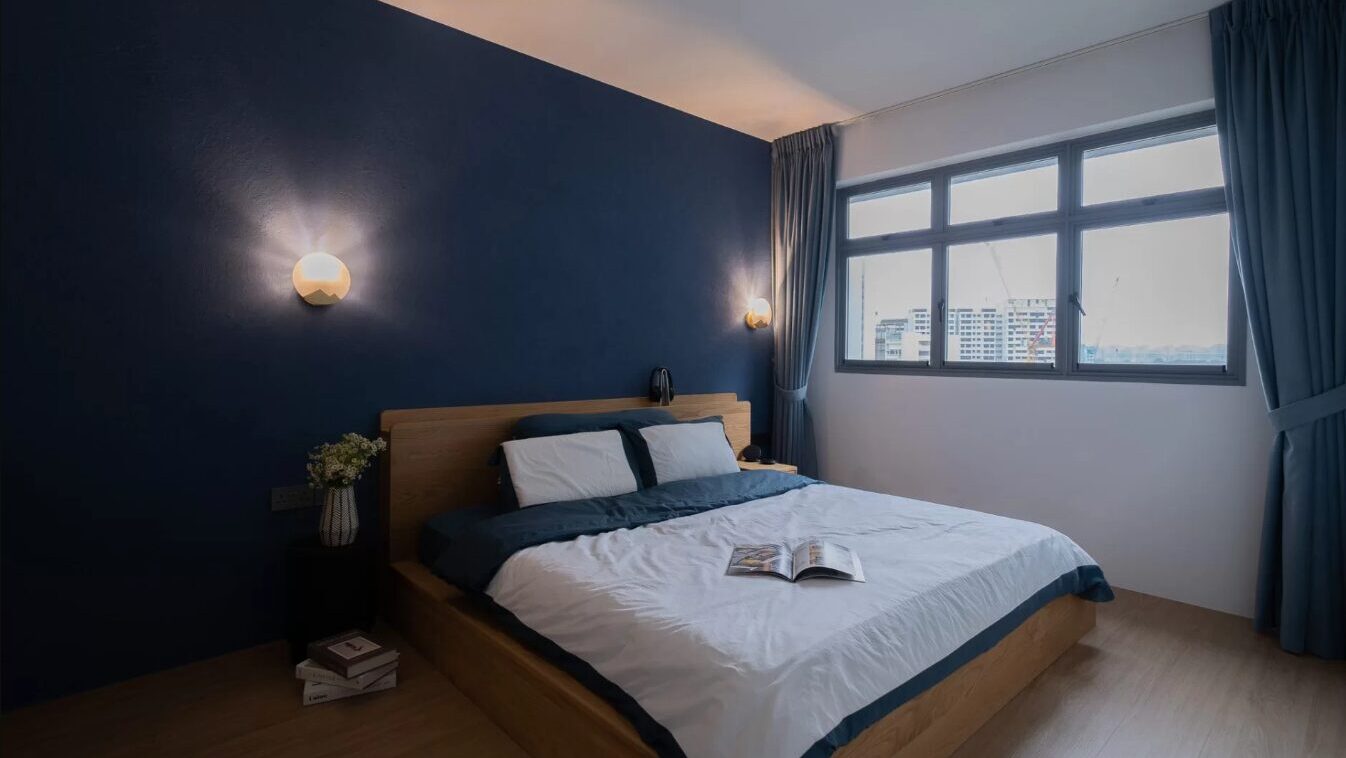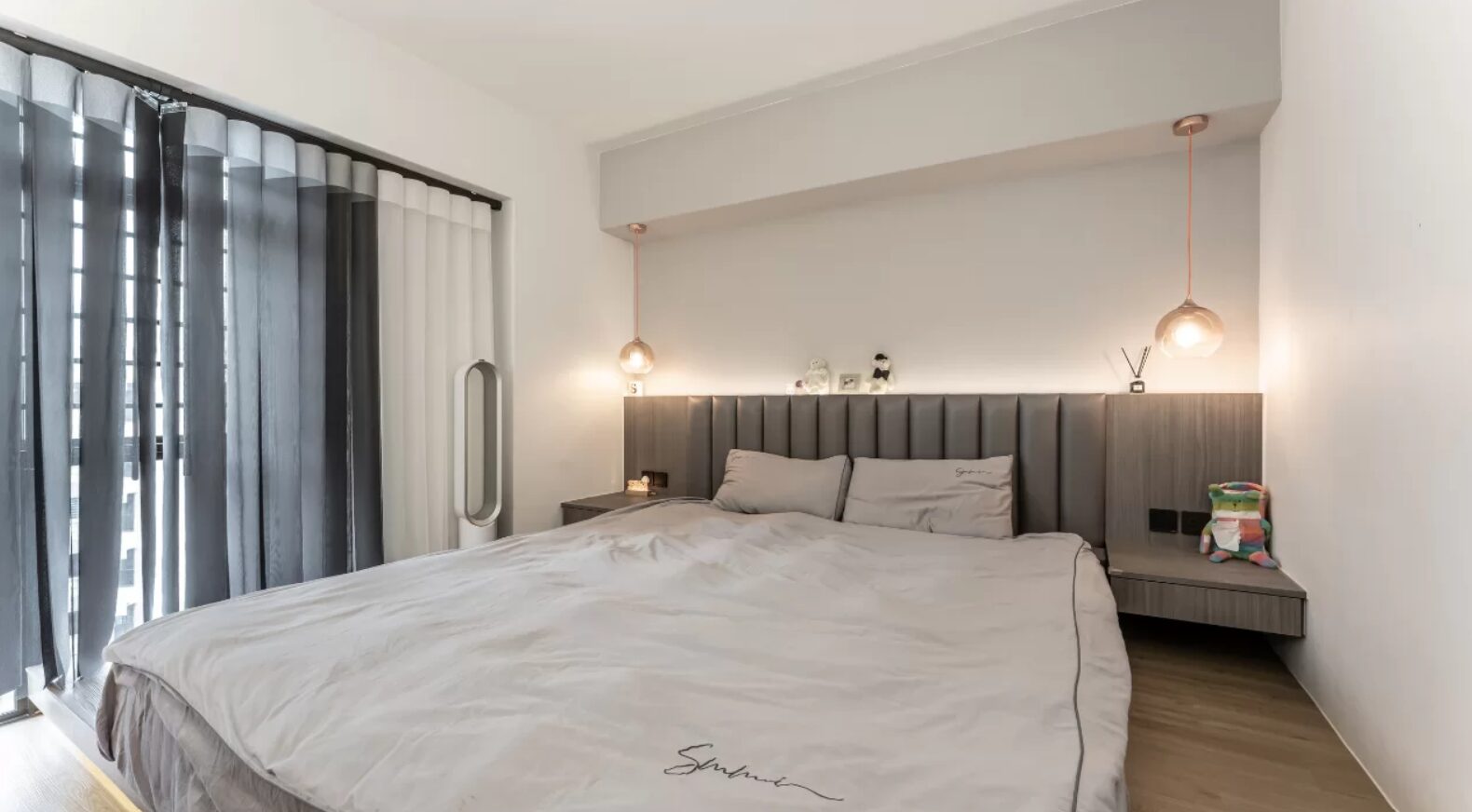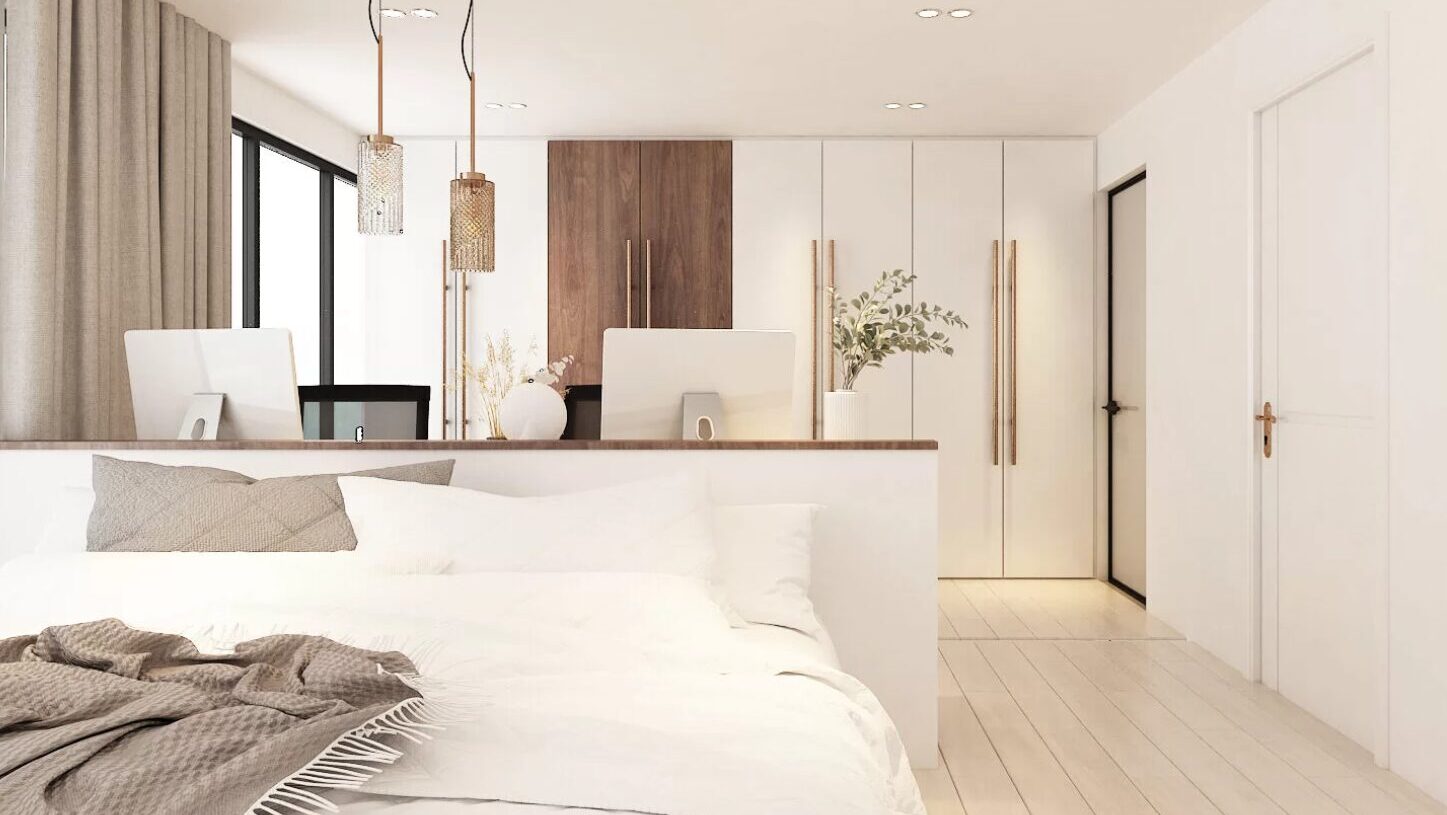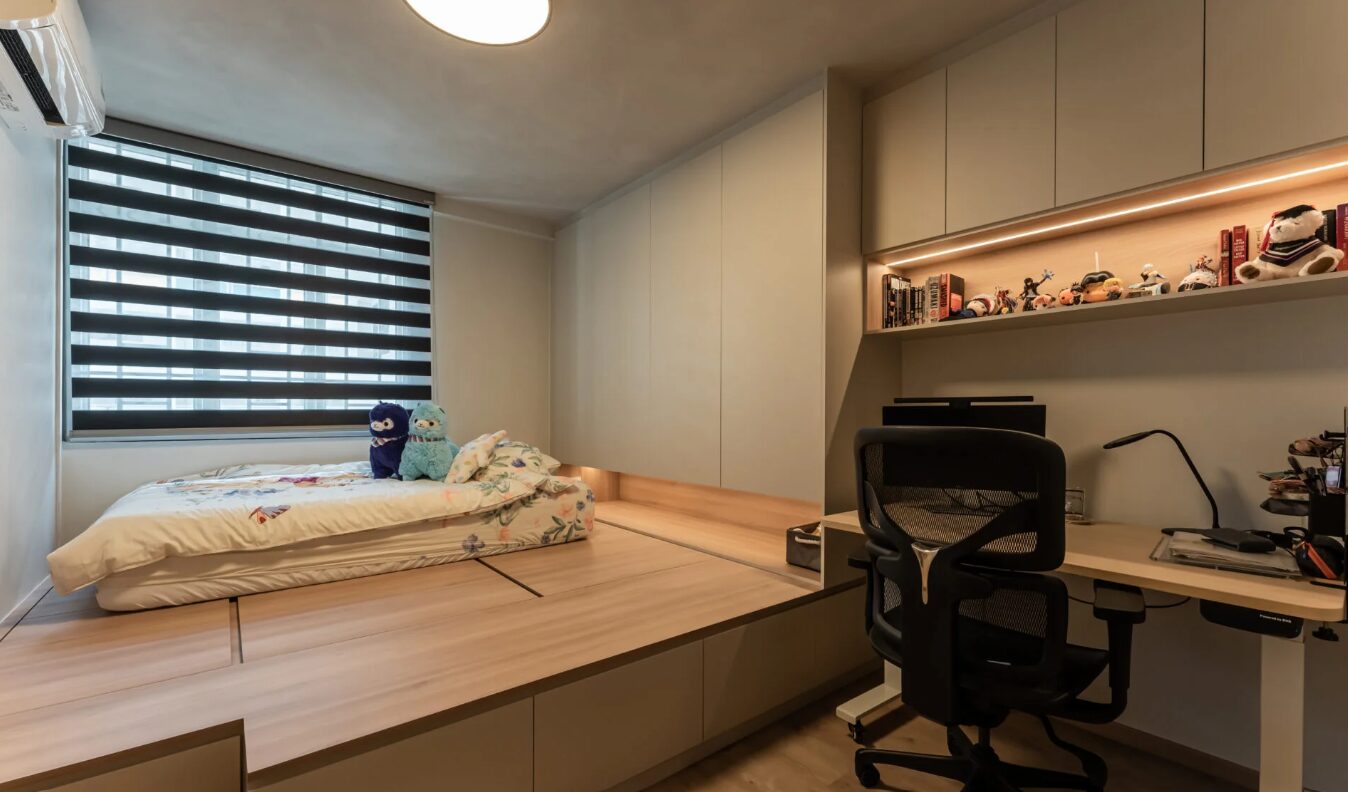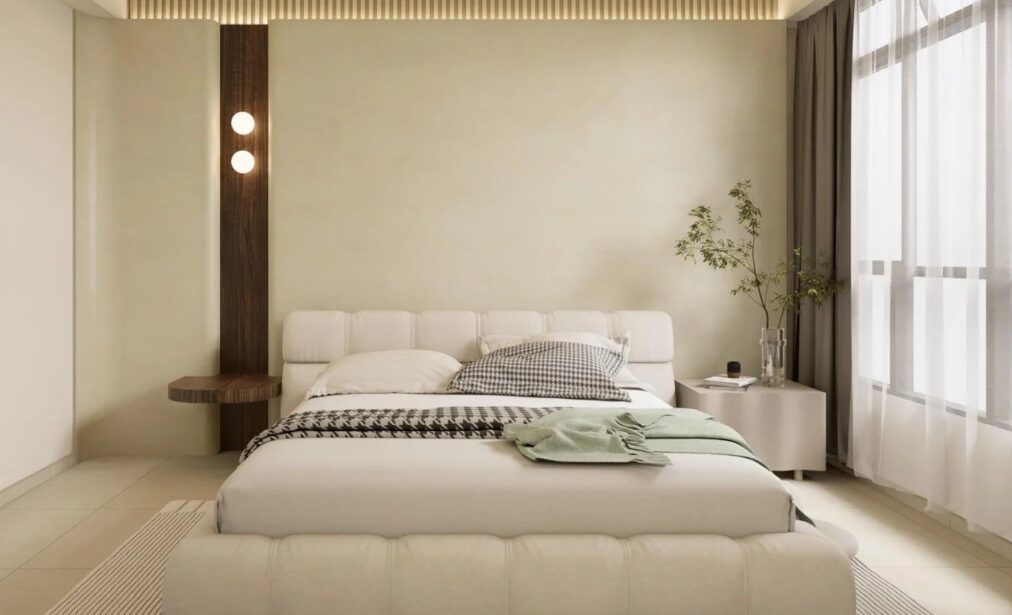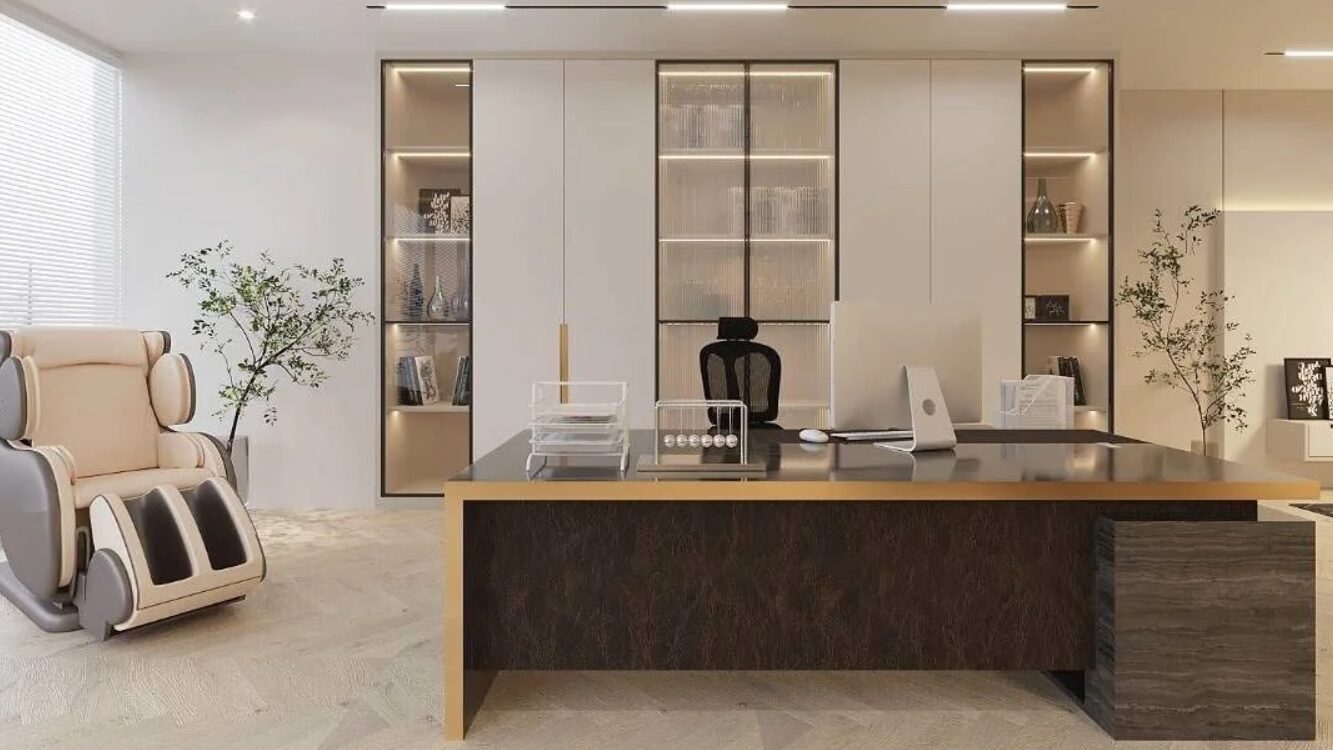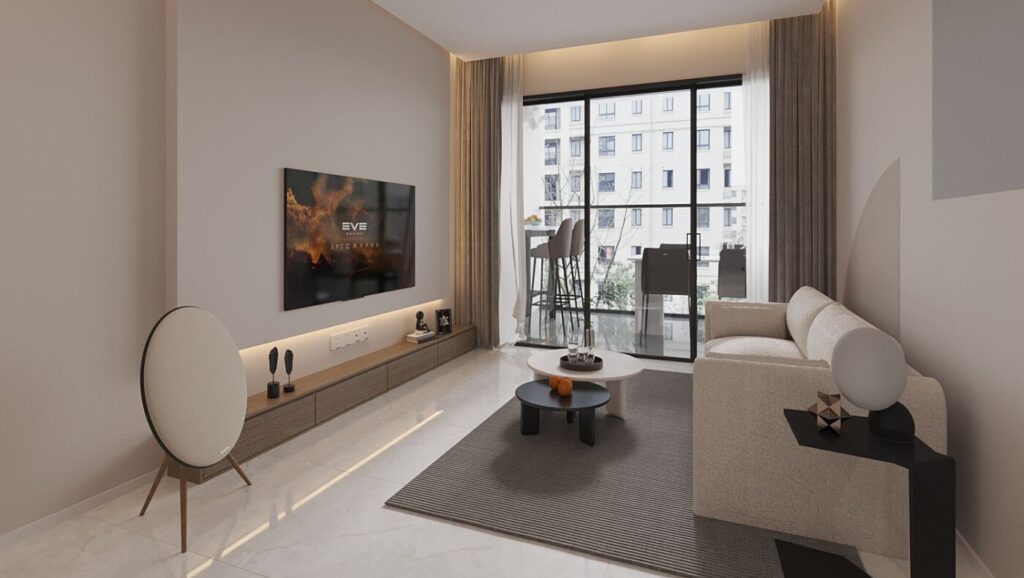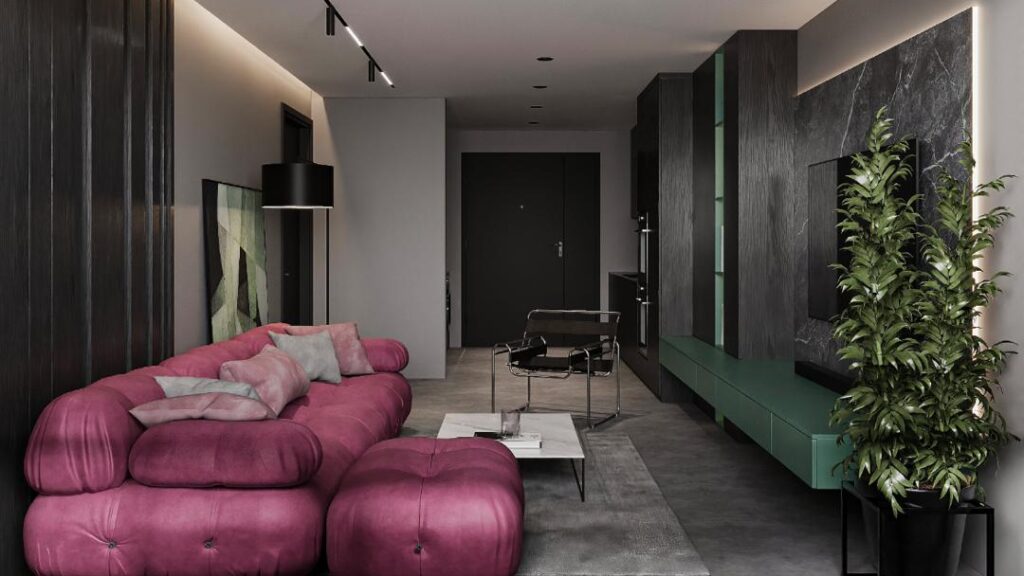The Best Colours for a Calming Bedroom in Singapore
| Topic | Details |
| Importance of Colour in a Bedroom | Choosing the right colours in a bedroom is essential to creating a serene environment that promotes relaxation and restful sleep. |
| Top Calming Colours | Soft blues, gentle greens, light greys, and soft pastels (like pinks, lavenders, and peaches) are recommended for a calming bedroom. |
| Colour Psychology | Colours like blue have calming effects, reducing stress and promoting relaxation. Vibrant colours like red can have the opposite effect, increasing energy and potentially hindering restful sleep. |
| Colour Choices for Small Bedrooms | Light colours such as soft whites, light blues, and gentle greys can make small spaces feel larger and more open, enhancing natural and artificial lighting. |
| Lighting and Colour Interaction | Warm, soft lighting enhances calming colour schemes. Layered lighting with dimmer switches can customise ambiance, balancing function and relaxation. |
| Colours to Avoid in a Bedroom | Avoid vibrant, saturated colours like bright reds, oranges, and yellows as they can increase energy and hinder relaxation. Opt for muted, softer tones for a more tranquil environment. |
Creating a serene and calming bedroom environment is crucial for a good night’s sleep, especially in a bustling city like Singapore where the pace of life is fast. Choosing the right colour palette for your bedroom can significantly influence your relaxation and stress levels. In this article, we’ll explore selecting the best colours for a calming bedroom atmosphere, ensuring you make informed decisions that enhance comfort and tranquillity in your personal space.
What are the Top Colours Recommended for a Calming Bedroom Environment?
When designing a bedroom, many elements come into play, but one of the most crucial aspects is choosing the right colour scheme. Colours significantly impact mood and can influence feelings of relaxation and calmness, which are essential for a restful night’s sleep. Soft, muted colours are often recommended for creating a serene atmosphere. Shades of blue, in particular, are frequently highlighted for their calming properties. Blue is known to evoke a sense of tranquillity, often associated with the sky and ocean, which can help lower blood pressure and heart rate, setting the stage for relaxation. By using soft blues in wall colours, bedding, or even decorative accents, you can cultivate an environment that feels both peaceful and expansive, promoting a sense of profound calm. Discover more about using light and airy designs in light and airy versus dark and moody interior design schemes.
In addition to blue, soft greens are another excellent choice for a soothing bedroom environment. Green is reminiscent of nature and growth, evoking feelings of freshness and renewal. It has the unique ability to bring the serenity of the outdoors inside, providing a harmonious and balanced atmosphere. This colour creates a gentle and nurturing environment that soothes emotions and promotes relaxation. Incorporating soft green hues, whether through wall paint, curtains, or decorative elements, can transform your bedroom into a sanctuary of natural calm. This approach not only enhances the visual appeal but also contributes to an overall sense of well-being, crucial for unwinding at the end of a long day.
Light greys and soft pastels also hold significant potential for creating a calming bedroom space. These colours serve as a neutral backdrop that can ground the mind and inspire tranquillity. Light grey, in particular, provides a modern and sophisticated touch without being overwhelming. Soft pastels, such as gentle pinks, lavenders, or peaches, can add subtle warmth and cosiness, enhancing the bedroom’s inviting atmosphere. By carefully selecting these gentle colours and incorporating them into the bedroom’s design – through paint, fabrics, or accessories – you can establish a peaceful sanctuary that nurtures relaxation and helps facilitate restful sleep. When contemplating your bedroom’s design, it’s important to consider how these colours can harmonise with your personal style while still promoting a calming and serene environment.
Colour That Psychologically Impact Sleep Quality
The psychology of colour serves as a powerful tool in interior design, especially in environments intended for relaxation, such as bedrooms. This concept is rooted in the idea that colours can influence our mood and emotions in profound ways. By understanding the psychological impact of colours, we can strategically use them to craft spaces that not only look appealing but also inspire specific emotional responses. In the context of a bedroom, where the primary goal is to relax and unwind, choosing the right colours becomes even more critical. The relationship between colour and mood is well-documented, and making informed choices can transform a bedroom from merely a functional space to a true sanctuary of peace and tranquillity.
Among the myriad of colour options, blue hues are particularly noteworthy for their calming properties. Blue is often associated with a serene and soothing atmosphere, reminiscent of the sky and sea. Psychologically, it is known to help reduce anxiety and lower stress levels, making it an ideal choice for bedroom colour schemes. The calming effect of blue can also lead to physiological changes, such as lowering the heart rate and promoting a more restful sleep cycle. By incorporating various shades of blue into your bedroom design, whether through wall paint, linens, or accessories, you can cultivate an environment that naturally encourages relaxation and restful sleep. It is this strategic use of colour that allows you to harness the power of colour psychology to your advantage, making your bedroom a haven of tranquillity.
Conversely, it’s important to consider how more vibrant colours, such as red, can have the opposite effect in a bedroom setting. Red is often linked with increased energy and excitement, which, while beneficial in certain situations, might be counterproductive when trying to wind down before bed. The stimulating nature of vibrant colours like red can potentially disrupt your ability to relax, leading to difficulties in falling asleep. When designing a bedroom, it is essential to balance aesthetic appeal with the psychological impact of colours. Understanding the nuances of colour psychology enables you to select a colour palette that not only enhances the visual beauty of your space but also contributes positively to your overall well-being, ensuring that your bedroom remains a restful retreat amidst the hustle and bustle of daily life. Discover more about effective color use in interior design at a simple guide to eclectic interior design.
Specific Shades That Work Best for Smaller Bedrooms
In smaller bedrooms, particularly in densely populated urban areas such as Singapore, the choice of colour can significantly impact how a space is perceived. When space is limited, creating an illusion of openness is often a priority in interior design. The strategic application of colour can alter the perception of a room’s dimensions, making it feel larger than it actually is. In compact living environments, where every square foot matters, selecting the appropriate colour palette becomes an essential design decision. By understanding how certain colours influence our perception of space, homeowners can make informed choices that maximise the utility and aesthetic appeal of their bedrooms.
Light colours, in particular, are known for their ability to expand visual boundaries and instil a sense of openness in small spaces. Shades such as soft whites, light blues, and gentle greys are especially effective for this purpose. These colours possess reflective qualities that allow them to bounce light around the room, creating an airy and expansive feel. The use of such colours is instrumental in countering the confines of limited space, promoting a larger, more inviting atmosphere. Invariably, these shades not only enhance natural light but also work well with artificial lighting, augmenting the perception of space throughout the day and night.
Incorporating these light colours through thoughtful design elements can further optimise spatial perception in smaller bedrooms. One approach is to use a feature wall painted in a light, cohesive hue to draw attention and create depth. Alternatively, selecting colour-coordinated bedding and accessories can add layers without overwhelming the room. These strategies create a sense of continuity and harmony, which is crucial for seamlessly integrating various elements within a compact area. For residents of Singaporean apartments or similar urban settings, these design choices are not merely about aesthetics but also about enhancing the functionality and livability of small spaces. By effectively utilising these techniques, one can cultivate a bedroom environment that feels both comfortable and spacious despite its physical limitations. Find more on enhancing small spaces in 5 unique approaches to small space design.
Combining Calming Colours with Proper Lighting
The interaction between colour and lighting plays a vital role in shaping the overall ambiance of a bedroom, particularly when the goal is to foster a calming atmosphere. Understanding how these elements work together is key to creating a soothing space where one can unwind after a long day. Colours alone cannot achieve the desired tranquillity; they must be paired with the right lighting to bring out their full potential. A well-lit room can enhance the mood and vibe established by your colour choices, making lighting an integral component of interior design. By consciously pairing colours with appropriate lighting, you can transform a simple bedroom into a haven of relaxation and serenity.
Warm, soft lighting is particularly effective in complementing calming colour schemes, such as light blues and greens. These hues are inherently soothing, invoking feelings of peace and relaxation. When paired with warm lighting, the effects are magnified, creating an inviting and restful environment. Warm lighting provides a gentle glow that softens the edges of a room and eliminates harsh shadows, enhancing the cosy and serene qualities of the space. Moreover, it adds a layer of warmth that can make blues and greens appear more vibrant and welcoming, further contributing to an atmosphere conducive to relaxation and restfulness.
To further customise the lighting to suit individual preferences, the installation of dimmer switches is highly beneficial. Dimmer switches offer flexibility, allowing the user to adjust lighting levels based on mood, activity, and time of day. For example, brighter lighting might be preferred during early evening hours, while a softer, dimmer glow is more suitable for bedtime. Additionally, layering different types of lighting ambient, task, and accent can create a multi-dimensional space that balances function and relaxation. By strategically combining these lighting elements with a soothing colour palette, you can create a bedroom environment that not only looks elegant but also enriches the tranquillity and comfort essential for restful sleep. This elegant balance is key in achieving luxe lighting on a budget for your home.
Colour Schemes to Avoid in a Bedroom Designed for Relaxation
When selecting colours for a bedroom, personal preferences undoubtedly influence the decision, but it’s crucial to consider the role of colour psychology in promoting restfulness. Bedrooms serve as retreats for relaxation and sleep, necessitating a thoughtful approach to colour selection to ensure they fulfill this function effectively. Although bright and bold colours might be personally appealing, they can inadvertently create an environment that is too stimulating for restful sleep. It’s important to strike a balance between personal taste and colours that foster a calming atmosphere. Understanding the general guidelines of colour psychology can help navigate this delicate balance, ensuring that your bedroom remains a sanctuary of tranquillity.
Certain colour schemes are generally advised against when designing a bedroom focused on relaxation due to their energizing properties. Vibrant, highly saturated colours like bright reds, oranges, and yellows are known for their ability to boost energy levels and evoke emotions such as excitement or alertness. While these qualities might be beneficial in spaces designated for activity, they can be counterproductive in a bedroom setting where unwinding is the primary goal. The stimulating nature of these colours can lead to increased heart rates and heightened awareness, making it more challenging to relax and prepare for sleep. Being mindful of these effects can help in avoiding colour choices that might inadvertently disrupt the desired calming atmosphere.
To create a soothing bedroom environment, it is generally recommended to opt for softer, more muted tones that promote tranquillity. Colours like soft blues, gentle greens, pale lavenders, and muted greys are often favoured for their calming attributes. These shades tend to be less overwhelming and more conducive to relaxation, helping to ease the mind and body into a state of rest. The study of colour psychology provides valuable insights into how different hues affect mood and can guide you in selecting a colour palette that enhances the serene ambiance of your bedroom. By leveraging this knowledge, you can avoid potential colour mishaps and ensure that your personal sanctuary is both visually pleasing and emotionally soothing. Learn more about how to implement these principles effectively by visiting how to choose interior colours based on colour psychology.
Choosing the perfect colour scheme for your bedroom is crucial in crafting an environment conducive to relaxation and good sleep. The colours we’ve discussed provide a great starting point for designing a serene retreat in your home. Remember, the ultimate choice should align with your personal comfort and aesthetic preferences. Consider experimenting with different combinations, perhaps starting with soft hues and gradually incorporating other elements like textiles and accessories in calming tones. For additional inspiration or professional guidance, consider exploring some of the best interior design ideas and tips at affordable interior design ideas for singapore’s HDB living and discover how to make your bedroom a nurturing, restful haven in the heart of Singapore.
FAQ
1. What are the best colours for a calming bedroom environment?
The best colours for a calming bedroom are soft blues, gentle greens, light greys, and muted pastels. These shades promote relaxation, lower stress, and create a peaceful atmosphere, making them ideal for unwinding after a long day.
2. How do specific colours affect sleep quality?
Colours have a psychological impact on emotions and mood. Soft blue tones can lower heart rate and reduce anxiety, aiding sleep. In contrast, bright colours like red or yellow can stimulate the senses and hinder relaxation, affecting sleep quality.
3. What colours work best for smaller bedrooms in Singapore?
In compact spaces, light colours such as soft whites, light blues, and gentle greys are effective. These shades create the illusion of more space, making rooms feel larger and airier, which is particularly useful in smaller Singaporean apartments.
4. How does lighting impact the colour scheme of a bedroom?
Lighting can greatly enhance or diminish the effect of colours. Warm, soft lighting complements soothing tones, like blues and greens, while layered lighting options such as dimmers can adjust the room’s ambiance to suit different times of day or activities.
5. Are there any colours to avoid in a bedroom meant for relaxation?
Yes, it’s best to avoid highly saturated and vibrant colours like bright reds, oranges, and yellows. These hues can be too stimulating and may disrupt the calming atmosphere required for a restful sleep environment.
Are you looking to upgrade your home? Look no further! Drop us an enquiry at media@redbrick.sg and let us help you transform your home into a smart and efficient living space. Our experts are here to assist you in finding the perfect smart home devices to suit your needs and enhance your lifestyle.
Designing your dream home can be an exciting journey, but it can also be overwhelming. With so many options and styles available, it can be challenging to decide what is best for you and your family. However, by considering factors such as functionality, color palette, furniture, materials, and personal style, you can create a space that is not only beautiful but also practical and comfortable.
When it comes to achieving a successful interior design project, choosing a provider with a rock-solid reputation and exceptional skills is paramount. At Redbrick Homes, we understand that inspiration is key. That’s why our top-quality interior design partners are ready to wow you with beautiful, personalized spaces brimming with exceptional Singaporean ideas.
Remember to take your time, do your research, and work with a professional if needed. With the right interior design choices, you can transform your house into a dream home that you’ll enjoy for years to come.


